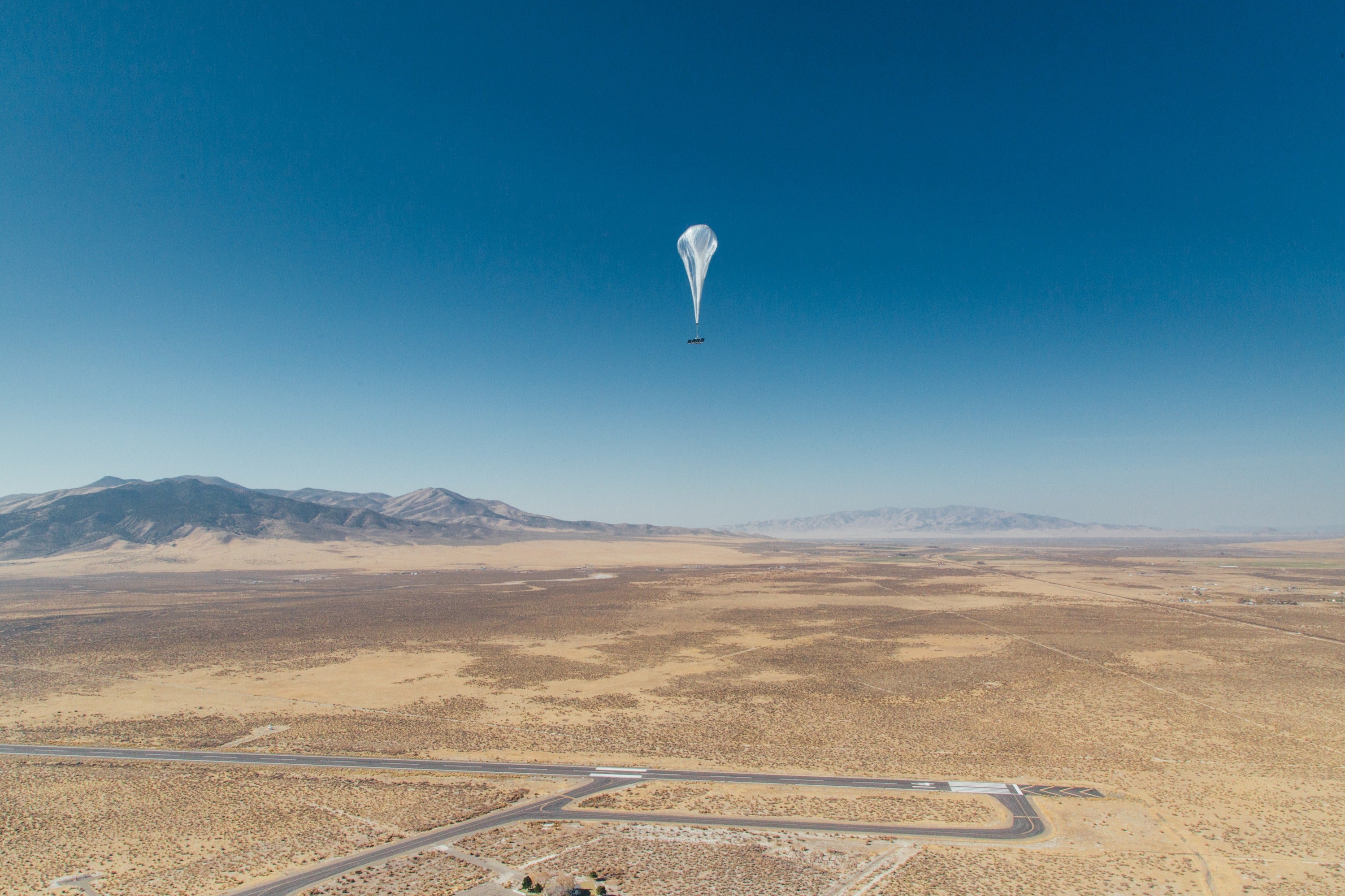AI used to make Google’s high-altitude internet balloons hover in place
Balloons float 12 miles above the Earth, well above commercial airplanes

Your support helps us to tell the story
From reproductive rights to climate change to Big Tech, The Independent is on the ground when the story is developing. Whether it's investigating the financials of Elon Musk's pro-Trump PAC or producing our latest documentary, 'The A Word', which shines a light on the American women fighting for reproductive rights, we know how important it is to parse out the facts from the messaging.
At such a critical moment in US history, we need reporters on the ground. Your donation allows us to keep sending journalists to speak to both sides of the story.
The Independent is trusted by Americans across the entire political spectrum. And unlike many other quality news outlets, we choose not to lock Americans out of our reporting and analysis with paywalls. We believe quality journalism should be available to everyone, paid for by those who can afford it.
Your support makes all the difference.Google researchers have found a way to use artificial intelligence to keep the company’s high-altitude internet balloons hovering in place.
The Loon helium balloons beam the internet down to remote locations around the world where service is otherwise impossible or places where disaster has struck.
The tennis court-sized “super-pressure” balloons float 65,000ft above the Earth’s surface but keeping them in one place has been an issue.
They are powered by solar panels and act as “floating cell towers” while up in the air.
Experts from Loon, which is owned by Google’s parent company Alphabet, used a form of AI called Reinforcement Learning (RL) to control a balloon over the Pacific Ocean for 39 days.
The AI uses historical weather patterns and current reports to decide if the balloon should rise or drop its altitude to find the best wind to maintain its position, according to the report in the journal Nature.
Now observers say the new navigation system could allow the balloons to track animal migration and climate change among other uses.
Loon has already deployed the technology on its balloons that provide the internet to parts of Kenya, said the company's chief technology officer Sal Candido.
“It’s super hard to have the balloon network over the people who need connection to the internet and not drifting far away,” said Mr Candido.
“What the RL is doing for us is deciding what’s the situation with the balloon, how much power does it have left, what is the best action that the balloon could do right now to stay over the person with the cellphone in their hand.”
The company will now use the AI to navigate the balloons from their launch sites to final locations.
“While there is no chance that a super-pressure balloon drifting efficiently through the stratosphere will become sentient, we have transitioned from designing its navigation system ourselves to having computers construct it in a data-driven manner,” said Mr Candido.
“Even if it’s not the beginning of an Asimov novel, it’s a good story and maybe something worth calling AI.”




Join our commenting forum
Join thought-provoking conversations, follow other Independent readers and see their replies
Comments